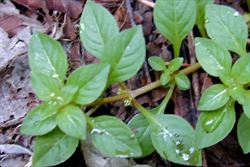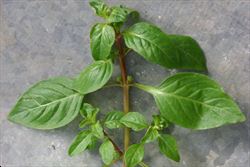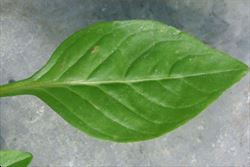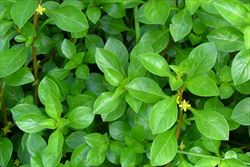Click on images to enlarge

habit with tiny whitish flowers lacking any petals (Photo: Forest and Kim Starr, USGS)

leaves (Photo: Trevor James)

close-up of leaf (Photo: Trevor James)

terrestrial habit of the very similar Ludwigia repens, with tiny yellow flowers having four petals (Photo: Sheldon Navie)
Scientific Name
Ludwigia palustris (L.) Elliot
Synonyms
Isnardia palustris L.
Family
Onagraceae
Common Names
creeping primrose, false loosestrife, Hampshire purslane, marsh ludwigia, marsh seed-box, marsh seedbox, water purslane, water-purslane, waterpurslane
Origin
Native to parts of northern and southern Africa (i.e. Algeria, Morocco, Tunisia, Zaire, Angola, Zambia, Zimbabwe, Botswana, Lesotho, Namibia and South Africa), most of Europe, western Asia, North America (i.e. Canada, the USA and Mexico), Central America (i.e. Costa Rica and Guatemala), the Caribbean and northern South America (i.e. Colombia).
Naturalised Distribution
Widely naturalised in eastern Australia (i.e. in some inland parts of southern New South Wales, in northern and eastern Victoria, and in south-eastern South Australia). Also sparingly naturalised in south-eastern Queensland.
Notes
Marsh ludwigia (Ludwigia palustris) is regarded as an environmental weed in Victoria and as a potential environmental weed or "sleeper weed" in other parts of Australia. This species has escaped cultivation as an aquatic ornamental and become a weed of permanent freshwater wetlands, waterways and riparian areas.
Marsh ludwigia (Ludwigia palustris) is regarded as a potential threat to one or more vegetation formations in Victoria. For example, it is a highly invasive weed of riparian shrublands in the Northern Inland Slopes bioregion and a weed wetlands along the lower Broken River. It is also naturalised along river banks of the upper Murray River in southern New South Wales and has recently been collected from a creek bed in Pine Rivers Shire and a small dam Rochedale in south-eastern Queensland.
In the USA and South Africa, two countries where it is regarded as being native, marsh ludwigia (Ludwigia palustris) competes with other native aquatic vegetation and can obstruct water flow.

